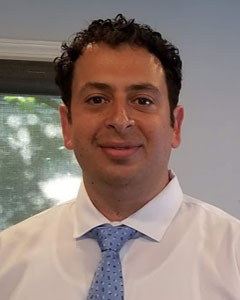Your dentist can provide you with dental bone graft surgery when you need it. A bone graft for dental implant is becoming increasingly common as it reduces dental implant complications. Our dental center in Yonkers is open on Sunday. That makes it easy for you to undergo a bone graft if you have a busy schedule. Both dental bone graft recovery time and dental bone graft pain are reduced thanks to the latest technology and the experience of our dentists.
Don’t be intimidated by the term: bone grafting. It sounds more complicated than it is, and in fact, it’s a common procedure for your highly-trained team of dentists. Dental bone graft surgery is done to restore your bone. Bone loss can result from tooth loss, gum disease or trauma.
A number of procedures, including dental implants, require that your bone be as close to its original position and shape as possible. With strong bones, your dentist achieves the absolute best possible results. And regarding your appearance, your jaw and other facial bones have to support the skin and muscles that comprise your face. Lack of bone support can lead to premature aging and cause your face to look hollow.
Rasul Mcneil
Google Review
It’s All for the Cause
Dental bone graft surgery makes beautiful dental work and tooth replacements possible. And you’re fortunate that your dentist is both a generalist and a cosmetic dentist. You get the best oral health treatments while preserving your smile at the same time.
Your underlying bones support your face. As you age, your jawbone begins to atrophy from lack of use and doesn’t support your teeth as well it used to. When you lose a tooth, it doesn’t matter so much why your tooth came out as what space it left. When the conditions in your mouth get worse, and the deterioration begins, you have to maintain the structural integrity of your face.
Bone Graft for Dental Implants
It’s actually quite common to show up at your dentist’s office for a consultation, only to be told that you need dental bone graft surgery. Regardless how bad it sounds, bone grafting in your oral cavity has become a routine procedure that’s as predictable as it is painless.
And while the need for dental bone grafting has been reduced, it hasn’t been eliminated. Now, smaller, less invasive techniques are being conducted in the comfort of an office setting. Newer grafts no longer require that large quantities of bone be harvested from other areas of your body. The older types of graft are called autogenous grafts, and they were by far the most invasive of all the techniques.
Newer Techniques Preferred
The bovine method of bone graft for dental implant is considered by some to be a biological placeholder. It makes use of animal bone, specifically from a cow, to physically prevent the collapse of surrounding bone and soft tissue in your face. This procedure has become commonplace in most dental surgery offices.
Bone graft for dental implant has an extremely high success rate. In some cases, it’s still necessary to perform major, autogenous grafts to provide secure placement for new dental implants. Different types of grafts include:
- Autograft is what you’re probably thinking of if you’re familiar with bone grafting. This method involves harvesting bone from one part of your body and depositing it into another. This is the only method that involves two surgical sites.
- Allograft refers to human bone from a deceased donor that is processed in a laboratory.
- A xenograft uses animal bone, usually from a cow.
- Alloplast is a graft made from purely synthetic materials.
What to Expect
Today, placing bone grafts is usually performed using only local anesthesia to prevent dental bone graft pain. Although your Saturday dentist may choose to give you a mild sedative to help you relax prior to the procedure, there are relatively few dental bone graft complications and the procedure is usually seamless. A tiny incision is made in your gum tissue. This is done to allow your dentist access to the bone underneath that is about to receive the graft.
Dental bone graft recovery time is fairly quick. Dental bone graft pain typically involves soreness following your surgery. But this can be managed with over-the-counter medication and ice therapy for swelling. It can take several months for bone maturation to take place and the dental bone graft recovery process to be complete.
Closing Arguments
Dental bone graft complications can be reduced by preventing infection and excessive swelling with a solid home care routine. Dental bone graft pain has been significantly reduced by advances in dental technology, and dental bone graft recovery times have been drastically improved.
Tooth and bone loss can harm your overall health and well-being. They can make you feel uncomfortable mentally as well as physically. Bone grafting truly creates new opportunities for you to have a full and attractive smile with improved functionality. Grafting technology continues to promote new bone growth and revolutionize the way you view tooth replacement.
Do you have any questions about dental bone graft? For more information or to schedule an appointment with the dental specialists of Park Avenue Smiles please contact our dental center.

